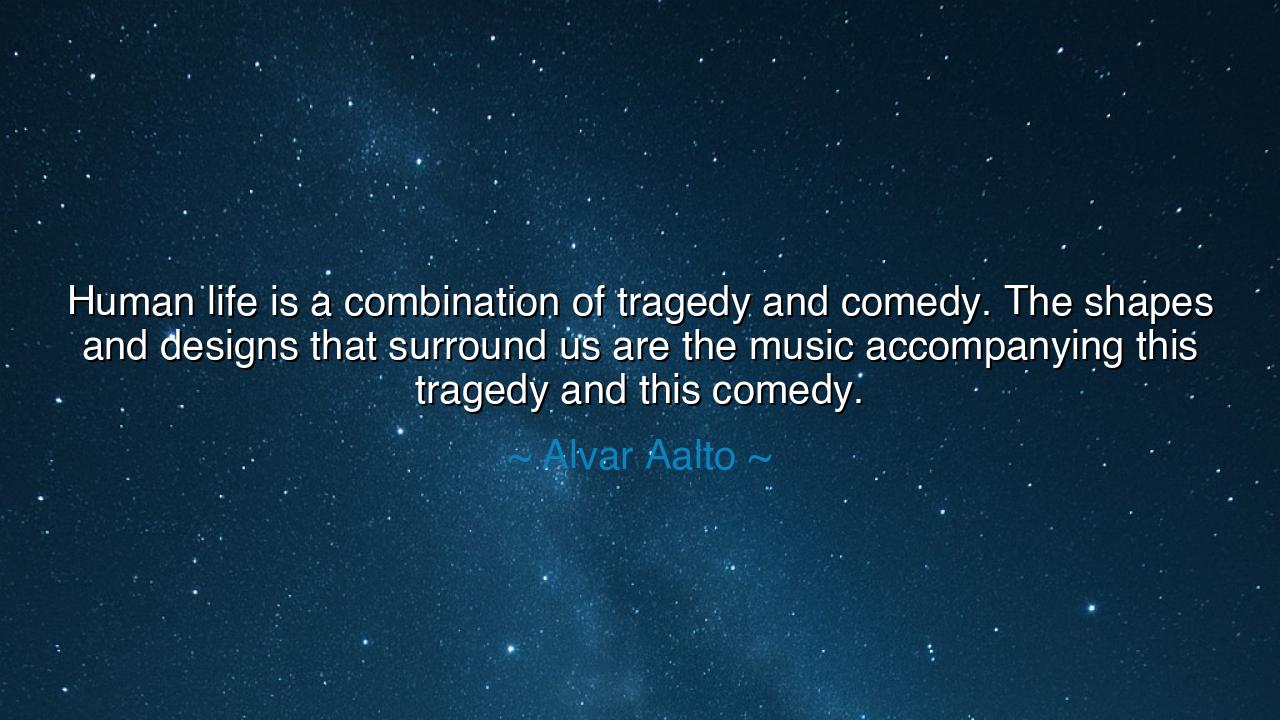
Human life is a combination of tragedy and comedy. The shapes
Human life is a combination of tragedy and comedy. The shapes and designs that surround us are the music accompanying this tragedy and this comedy.






Hear, O children of time, the voice of Alvar Aalto, master of form and vision, who declared: “Human life is a combination of tragedy and comedy. The shapes and designs that surround us are the music accompanying this tragedy and this comedy.” These are not idle words of an architect, but the revelation of one who beheld life as a stage where both sorrow and joy entwine, and where even the stones and walls sing the chorus of our existence. In this saying, he proclaims that man’s dwelling, his objects, his very environment are not silent, but companions in his drama, echoing both his tears and his laughter.
For truly, human life is woven with both shadow and light. To live is to weep, to rejoice, to stumble, and to rise again. The tragedy of death, of loss, of disappointment presses upon all; yet hand in hand with it walks the comedy of laughter, of friendship, of absurd moments that relieve the weight of existence. And just as the ancient theater knew no play without both masks, so no life is whole without this mingling of grief and joy. It is the divine balance written into the very fabric of our being.
Aalto, master of shapes and designs, saw that the spaces we build are more than shelters—they are the stage on which our lives unfold. A home, a temple, a marketplace, each has a music of its own, shaping the soul of those who dwell within. The curve of a roof, the flow of light through a window, the meeting of wood and stone—all these are like instruments playing in the background of our days. They amplify our sorrows, or soften them; they heighten our joys, or cradle them in stillness. Thus, architecture becomes not mere craft, but the very music that accompanies life’s great play.
Consider the Parthenon of Athens, rising white against the sky. For centuries, it has witnessed both tragedy and comedy: the grief of wars, the laughter of festivals, the prayers of the devout, the debates of philosophers. Its design, harmonious and grand, lent dignity to both sorrow and joy, reminding mortals of their part in a greater symphony. Even in ruin, its columns stand like solemn notes, echoing across time the music of a people who lived fully, who embraced both the dark and the light.
So too in smaller tales: a simple peasant’s cottage, built with care, its hearth glowing, its windows small yet warm, becomes the music for the daily comedy of children at play, for the tragedy of loss when sickness comes, and for the resilience of hearts that endure. The surroundings are not mute—they shape the very spirit of the life lived within them. Thus, Aalto teaches us that the material world is bound with the spiritual, that our designs sing, whether we hear them or not.
The lesson, then, is this: create and choose your surroundings with reverence. Let your home, your work, your tools, even the smallest designs, reflect beauty and harmony. For they shall accompany you in both laughter and tears, like faithful instruments that never cease their music. If you dwell among chaos and ugliness, your spirit will be burdened. But if you surround yourself with order, light, and grace, even your tragedies will be tempered, and your comedies more joyful.
Practical wisdom calls you to action: tend to the spaces where you live and labor. Shape them as you would a melody—simple, balanced, true. Bring into them the light of nature, the warmth of wood, the curve that pleases the eye. Let your designs, however humble, carry the music that lifts the soul. In so doing, you honor both the comedy and the tragedy of life, for you set them to a noble tune.
Thus, remember the wisdom of Aalto: you cannot escape sorrow, nor should you cling only to laughter. Life is both. But you can choose the music that surrounds your journey. Shape it well, and the tragedy will not crush you, nor the comedy leave you empty, for both will be embraced in beauty, and your life will become a symphony worthy of remembrance.






AAdministratorAdministrator
Welcome, honored guests. Please leave a comment, we will respond soon